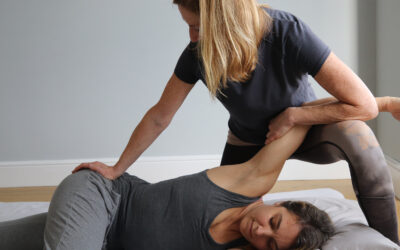I can help with many of the symptoms you may be experiencing as well as improving the movement of your jaw. Techniques used can include, with consent intra-oral work, this is inside your mouth with surgical gloves. Treating the muscles of the neck, shoulder, head and jaws not only helps with pain, relieving tension, and discomfort in the jaw and surrounding areas but can help you if you experience any of the following:
- Headaches/migraines
- Chronic pain/tenderness in muscles around the ear, neck, face, upper back & shoulders
- Bruxism (teeth grinding)
- Jaws that get stuck or lock in the open- or closed position (Trismus)
- Earaches or loss of hearing (without infection)
- Ringing of the ears (tinnitus)
- Twitching of the face or eye muscles
- Vision problems and sensitivity to light.
- Dizziness
- Difficulty swallowing/speaking.
The exact cause of a person’s TMJ disorder is often difficult to determine and your pain may be due to a combination of factors. Some people who have jaw pain also tend to clench or grind their teeth (bruxism), although many people habitually clench or grind their teeth and never develop TMJ disorders. TMJ dysfunction affects everyone differently. For some, it’s a temporary issue that goes away in a week or two. For others, it’s a chronic condition thatnegatively impacts quality of life.
The temporomandibular joint (TMJ) acts like a sliding hinge, connecting your lower jaw (mandible) to the temporal (temples) bone of the skull. You have one joint on each side of your jaw, these are connected to each other by the jawbone, they’re positioned in front of each ear. The TMJ enables us to move our mouths including whilst talking and eating. It’s responsible for all sorts of facial expressions and is very strong for its size. The two temporomandibular joints can differ in size, shape, and even in their function. The teeth have an impact too, they have a specific way they must fit together and the tooth position gets priority over the joint position. This means that the TMJ is forced by the muscles to move so that the teeth will fit together properly. This can potentially cause a misalignment within the joint capsule.
You can’t always control factors that cause TMJ dysfunction. But certain habits can make TMD worse, including overworking your jaw by chewing on pens, pencils or excessively chewing gum. Overworking your jaw daytime teeth clenching or grinding is also a contributing factor. Head forward posture can also place excess pressure on your neck, shoulder and facial muscles contributing to the discomfort. If you wish to be nerdy and look closer at the anatomy of the jaw
https://teachmeanatomy.info/head/joints/temporomandibular/
Feel free to contact me to find out how my treatments can help you email or call 07739155807


